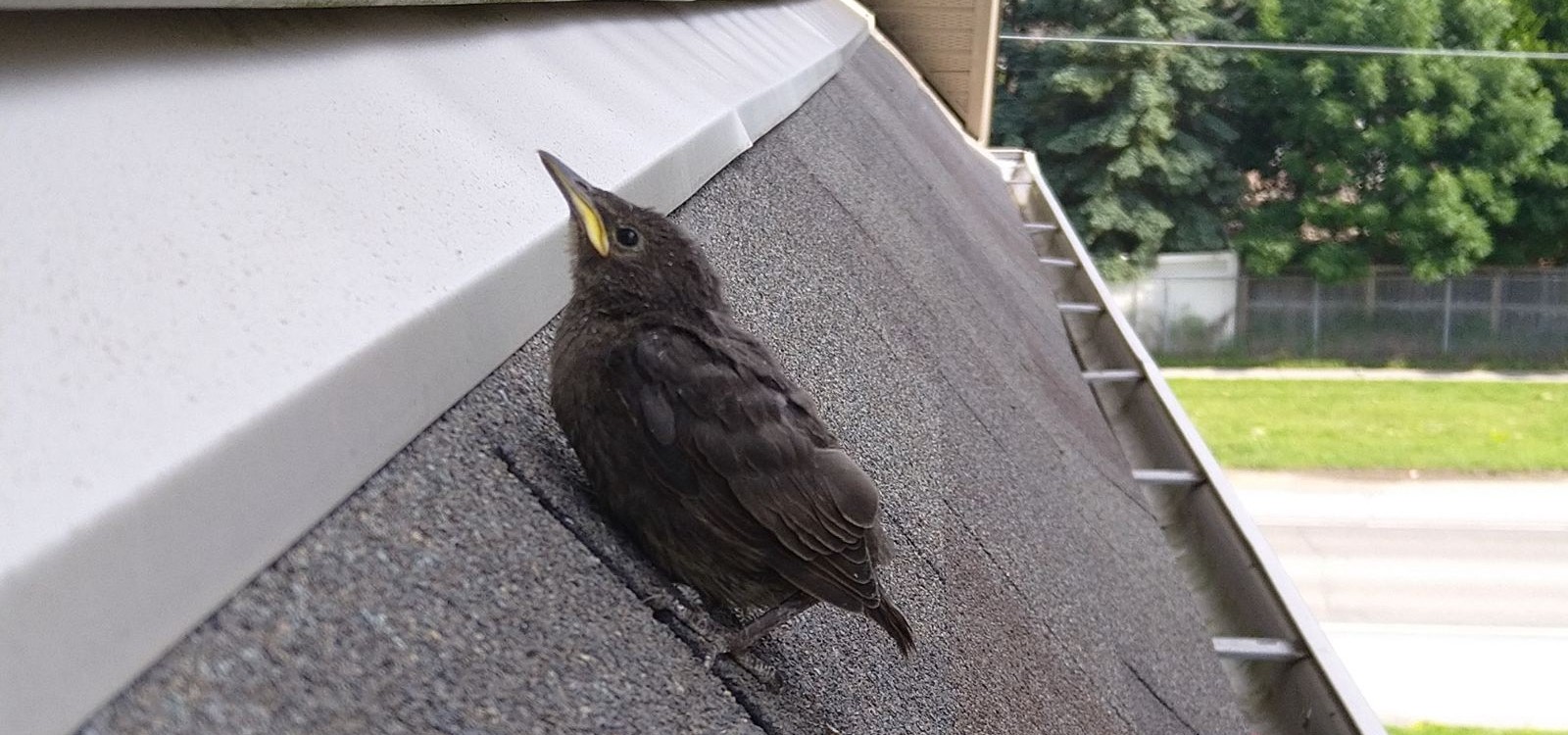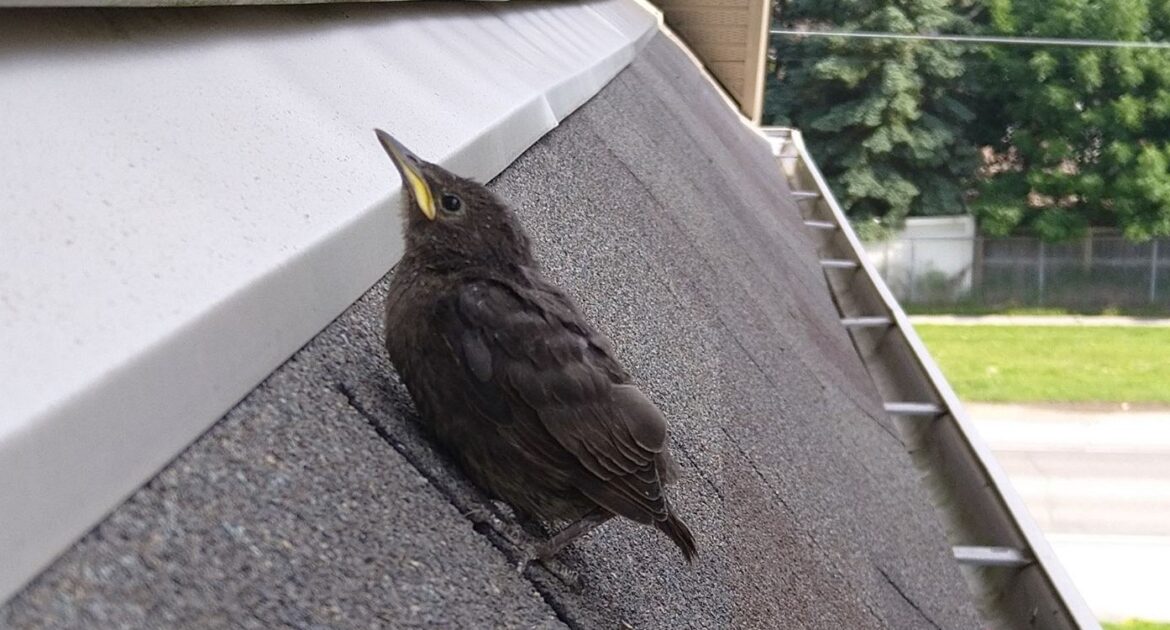As Oakville homeowners gaze at the tranquil harbour views along Lake Ontario, they may observe birds engaging in the intricate dance of nest-building. This spectacle of avian architecture is a vital ecological activity. At Skedaddle Humane Wildlife Control, we have devoted over three decades to studying bird nesting behaviour, assisting Oakville residents in peaceful coexistence with their feathered companions while safeguarding their homes.
Nesting is a complex procedure rooted in evolutionary adaptations and shaped by environmental conditions. By familiarizing themselves with bird nesting habits, homeowners can proactively tackle potential conflicts before they arise.
The Environmental Factors Influencing Bird Nesting Behaviour
Birds’ nesting choices are the result of careful evaluations of environmental factors, which provide favourable conditions for their offspring’s survival.
Climate Considerations
Temperature significantly impacts nesting behaviour, prompting many species to align their nesting with seasonal changes:
- Seasonal timing: Birds predominantly nest in spring and early summer when moderate temperatures and abundant food sources prevail.
- Temperature regulation: Nests are often strategically oriented, like south-facing positions, to maintain optimal incubation warmth.
- Weather protection: Birds favour sites offering shelter from adverse weather, such as rain and wind.
Given Oakville’s distinct climate, these birds gravitate towards the warmth and shelter of human-made structures during colder seasons, preferring vents and attic spaces for refuge.
Habitat Selection Criteria
Species-specific requirements guide birds in choosing nesting sites, which generally include:
- Predator protection: Sites offering concealment or inaccessibility to predators.
- Proximity to food sources: Feasible access to feeding areas is crucial.
- Availability of materials: Access to suitable nesting materials is essential.
- Territory quality: Locations supporting ecological needs specific to each species.
Urban habitats present unique nesting opportunities, as human structures increasingly supplement natural habitats. While some birds adjust to urban settings, others still rely on traditional natural sites like dense woods and tree hollows.
Bird Home Construction: How Different Species Build Their Nests
Birds exhibit remarkable diversity in building techniques, honed through evolutionary specialization. Different species leverage diverse resources and methods finely tuned to their environments.
Common Nest Builders in Oakville
- Starlings: Known as cavity nesters, starlings exploit exhaust vents in kitchens and bathrooms for nesting. They gather grass, twigs, and feathers, creating a fire hazard in ventilation systems.
- House Sparrows: Building dome-shaped nests with grass, feathers, and string, they favour cavities in buildings and dense outdoor vegetation.
- Robins: Crafting cup-like nests of grass and mud on tree branches or ledges, robins often return to successful nesting sites annually.
- Pigeons: Unlike seasonal nesters, pigeons opt for simple platform nests on ledges or rooftops and can breed all year if the environment permits.
Nest Construction Techniques
Birds’ construction methods display astonishing craftsmanship:
- Weaving: Orioles skillfully weave plant fibres into intricate hanging nests.
- Masonry: Robins and swallows mix mud with grass for robust cup-shaped nests.
- Excavation: Woodpeckers carve cavities into trees, later accommodating other bird species.
- Mound-building: Ground-nesting birds form raised debris platforms.
Birds also adapt these intrinsic skills to urban landscapes, ingeniously incorporating human-made materials like plastic and wire into their constructions.
Where Birds Build Their Nests in Urban Environments
Urbanization introduces both challenges and novel possibilities for avian nesting. Oakville’s growth has prompted remarkable nesting adaptations.
Human Structures as Nesting Sites
Modern architecture mimics natural nesting environments with:
- Vents and ducts, echoing natural hollows.
- Roof edges and eaves, acting as protective cliff-like spots.
- Attic spaces, offering seclusion akin to tree cavities.
- Gutters, representing crevice-like channels.
These adaptations allow birds to thrive and innovate in human territories. To a starling, a bathroom vent represents an ideal, safeguarded nesting chamber.
Adaptations to Urban Living
Urban avian species have evolved distinct strategies for thriving amid human activity:
- Behavioural adaptations: Urban birds demonstrate greater tolerance for noise and human presence compared to rural counterparts.
- Material utilization: City birds ingeniously incorporate human debris into their nests.
- Timing adjustments: Some urban species nest early due to the city’s heat, extending breeding seasons.
- Extended breeding seasons: favourable urban conditions permit some species, like pigeons, to breed year-round.
How Birds Choose Their Nesting Sites
Birds employ a complex decision-making process in selecting optimal nesting sites, ensuring reproductive success.
Safety Considerations
Safety from predators and weather conditions is a top priority:
- Nest height provides protection against ground predators.
- Concealment through camouflage or strategic site choice.
- Structurally sound sites withstand adverse weather.
- Selecting sites distant from competing birds and threats.
Resource Proximity
Birds prefer nesting sites that conserve energy and ensure survival:
- Food sources: Nesting near feeding areas limits travel and exposure.
- Water access: Proximity to water aids in hydration and feeding.
- Building materials: Readily available materials save energy and time.
Previous Success Factors
Birds often return to previously prosperous nesting grounds:
- Sites that previously produced successful offspring.
- Territories with proven success based on other birds’ experiences.
- Steady, undisturbed regions conducive to repeated success.
Understanding these patterns allows Skedaddle to prevent nesting traditions on properties proactively and ethically.
Preventing Problems with Nesting Birds
While bird nesting is a marvel of nature, it can pose challenges for homeowners. Proactive measures are necessary to safeguard both birds and properties.
Common Problems Associated with Nesting
When birds choose to nest on or in human structures, several issues can arise:
- Fire hazards: Dry nesting materials in vents risk ignition.
- Ventilation blockages: Nests disrupt airflow, affecting energy efficiency and moisture control.
- Property damage: Acidic droppings deteriorate building materials.
- Health concerns: Nests can harbour diseases transmissible to humans, including salmonellosis and histoplasmosis.
Professional Bird Management Approaches
At Skedaddle Humane Wildlife Control, we offer comprehensive, bird-friendly management solutions to mitigate these risks while respecting avian life. If bird nesting is impacting your Oakville property, contact us for expert consultation and humane intervention. Protect your home and ensure harmonious coexistence with our expert assistance.




